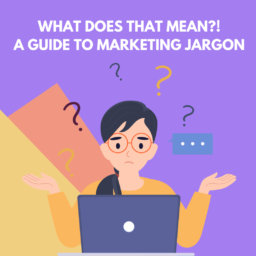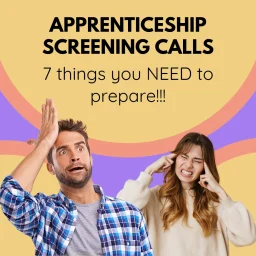Here’s the situation
You’ve just finished college or university. You have a couple of pieces of paper that say you know about XYZ which you list on your applications and CV. You’re applying for dozens of jobs every week and you hear back from 10% of them if you’re lucky. You attend the occasional interview only to be pipped to the post by someone with marginally more experience than you.
Sound familiar? Don’t worry, there are thousands of people in your situation.
The sad reality is this, your CV is exactly the same as all the other college and university graduates out there.
I’m sorry, it’s just the truth
Don’t be offended, it’s just a fact. CVs are boring! Once you’ve seen ten CVs, you’ve seen them all. Whether they’re written in Word or a fancy PDF, the content is largely the same. This is compounded when you’re young or looking to break into a new field. The reason behind this is you likely won’t have any super-relevant experience that transitions to the jobs you’re applying for.
I should know. When it comes to marketing, I’ve seen A LOT of CVs. I used to work in marketing recruitment many moons ago. I managed to break into my first marketing role through sheer perseverance and had to hire junior marketers of my own, and now I work in marketing apprenticeships. So, over the years, I’ve seen thousands of CVs.
This issue is…
You’re investing far too much time on your boring CV
I speak with dozens of people every week who agonise over their CVs. Asking for feedback or for me to critique their coveted documents.
I get it, the professional world puts so much emphasis and importance on that singular document that’s designed to summarise your entire professional career trajectory to date. But, the hard cold facts are, if you haven’t started your marketing career yet, what’s to talk about?
You could do all the fancy designs and rewording and reviews you like, but talking about what you know is no longer enough in a job market where there are thousands of other similar individuals to you.
That’s where a portfolio comes in
“But if I can’t get any marketing jobs, how am I meant to build a portfolio?” I hear you say. We’ll come back to that in a moment.
Firstly, what do I mean by a marketing portfolio? Put simply, it’s just a collection of documents, images, or web pages that show some of the work that you’ve done. Loads of industries use portfolios, but marketing has sort of fallen by the wayside.
Putting your work online using portfolio websites helps you create your personal brand, find potential clients if you’re a freelancer, and demonstrate your previous work to potential employers. The best part is, that you don’t have to be a web design expert to do it; there are free portfolio services available that make the process a breeze.
The benefits of building a marketing portfolio
There are dozens of benefits of setting up a portfolio including:
- It shows that you can use CMS to build websites;
- They show that you can write long and short-form copy;
- They allow you to show audiovisual content that you’ve created;
- They can show how you’re able to consider audiences and industries;
- They can show any CPD or certifications that you’ve gotten;
- They ultimately demonstrate how you’ve progressed over time.
How does it work for marketing?
Marketing is a slightly different kettle of fish. For instance, a photographer can upload their portfolio of images. A graphic designer could upload examples of their design work. So what would a soon-to-be marketer add to their portfolio?
This all depends on your current situation and there are dozens of variables to consider. However, here are some examples of the sorts of things you could do with a marketing portfolio with little or no experience:
- Personal branding materials: Logo design, business card mock-ups, or social media profile banners created in something like Canva;
- Content creation samples: Blog posts, social media posts, or email newsletter drafts for hypothetical companies or based on real-life businesses;
- Marketing campaign ideas: Concept outlines, mock-ups of ad creatives, or campaign pitches;
- Graphic design projects: Infographics, posters, or digital illustrations based on topics or industries;
- Website or landing page designs: Mock-ups or wireframes showcasing layout and design ideas;
- Market research: Short reports summarising industry trends, competitor analyses, or consumer insights;
- Marketing strategy proposals: Plans outlining target audience, messaging, and promotional tactics for local businesses;
- Freelancing examples: Examples of freelance work you may have been able to land whilst looking for work.
Now, these are just some ideas and ultimately, they focus mainly on the hypothetical. But, honestly, there isn’t much difference between showing hypothetical work and real-world examples. The idea here is to show prospective employers that you’re agile and able to use your initiative and imagination to come up with ideas for an array of organisations and industries aimed at various target audiences.
Where should you start?
Check out some of the following free portfolio providers. They all have pros and cons but choose one which you like and get started.
Building a portfolio is a continual process. Instead of spending one or two hours a week looking at your CV, focus on building out some examples of content for your portfolio and over time you’ll build up quite an impressive array of content. Here are some portfolio websites you could use:
- Journo Portfolio
- WordPress (with free themes)
- Adobe Portfolio
- Wix (with free plan)
- Weebly (with free plan)
- Portfoliobox (with free plan)
- Google Sites
Also, don’t worry about them looking like you’ve paid thousands for a designer to intricately tweak every little feature. Let the content you create speak for itself. Most interviewers viewing it will likely understand that it’s a free website and will focus more on what you’ve produced rather than whether the side navigation looks 20 pixels out of place.
Now, get started
Here’s what I want you to do. Go out and choose two companies. One should be quirky and cool that you personally love, the other a little more corporate. Once you’ve made your choices. Do the following:
- Conduct a little bit of research – Research the companies, their products or services, prices, their online and offline presence, and their competitors. Use tools like Google Trends and find articles about the organisations online. Document your findings in a section of your portfolio or in a downloadable PDF;
- Put together a basic marketing plan – You’ll probably have never done this before, but don’t overcomplicate it. Come up with an idea for a marketing campaign that that business could run. Think about their target audience, what you’d be trying to achieve, the channels and platforms you’d use, and maybe if you’d need a budget for the project. Again, document this;
- Go out and start making some mock-ups – Use free tools like Canva to make mock social media posts, Mailchimp to create mock emails, ad mock-up tools from Google to show social or search ads, design a wireframe of a possible landing page, create a leaflet or billboard ad, the list goes on. Again, put all of these things into your portfolio.
Ultimately, you won’t actually run these campaigns. But, by doing these sorts of things, you’ll demonstrate that you can think strategically by using research, understanding an audience, and executing your findings. Basically, marketing…
Okay, let’s wrap it up…
I’m going to close it off here because I could probably write another four thousand words on all of this. But, here’s what you should be doing next:
- Spend a couple of hours a week working on your portfolio;
- Ensure you highlight you have a portfolio on your CV. Preferably, as close to the top as possible;
- Continue to apply for roles and where possible, for companies that work in similar fields to those you’ve chosen to build your portfolio around;
- Continue to invest time and money into your professional development with certifications, reading, and courses;
- Politely ask marketing professionals to give you feedback on your portfolio, not your CV;
- Apply for freelance contracts using your portfolio. This will allow you to create real-world examples which you can then add.
This process isn’t a quick fix, and, as the saying goes, nothing good ever comes easy.
Though you may be lucky enough to land yourself that coveted first role in marketing by applying for hundreds of jobs over a period of months. If you’re not one of the lucky few, you need to change your game plan. By working on a portfolio, you’ll dramatically increase your chances of getting interviews and ultimately you’ll develop skills and knowledge through execution. Just remember, knowledge is not power, doing is power.
Interested in seeing more of our guides, advice, and articles on marketing apprenticeships?
Then sign up for our monthly newsletter. We’ll send you all the information on our latest stuff and general updates as well. Sign up below!

















